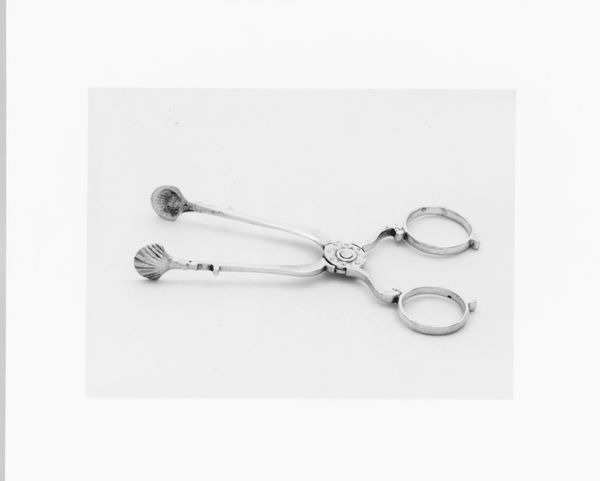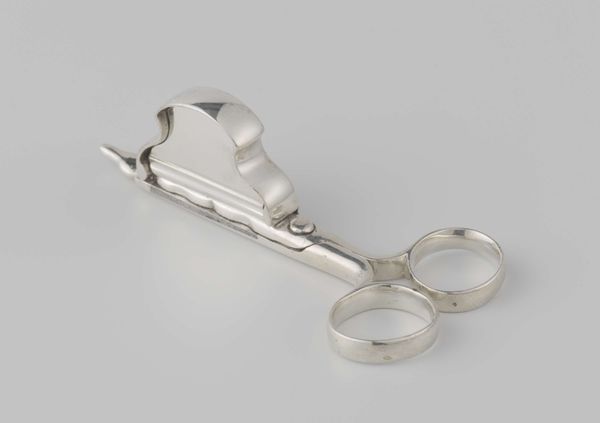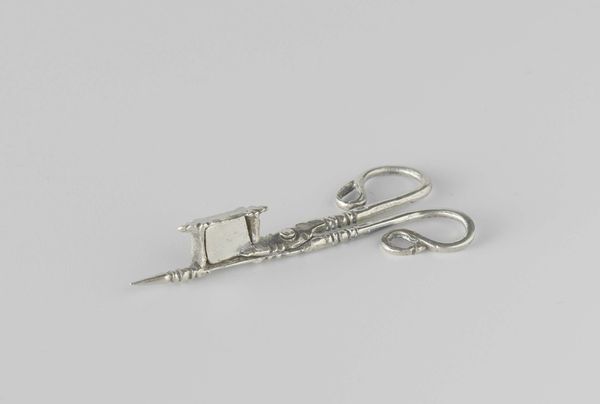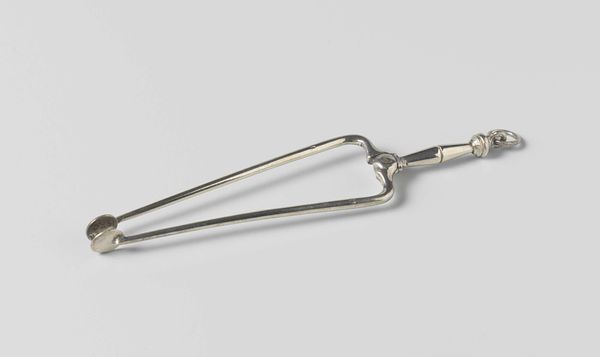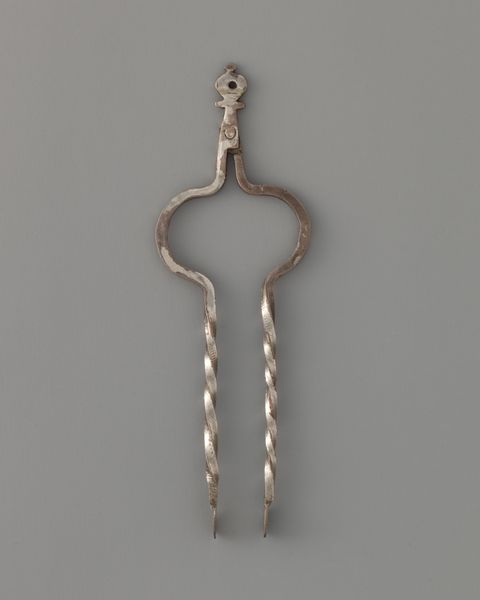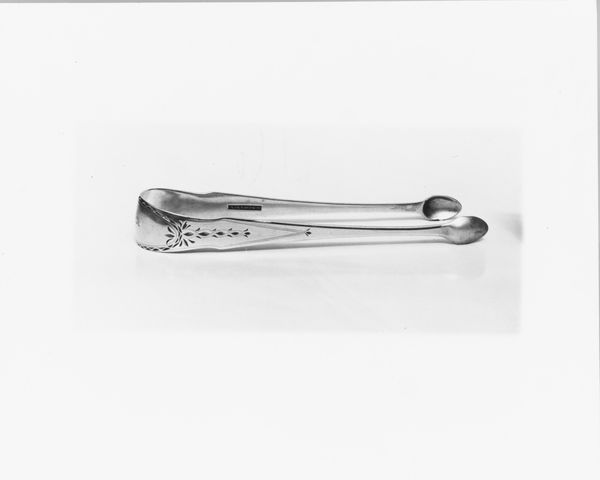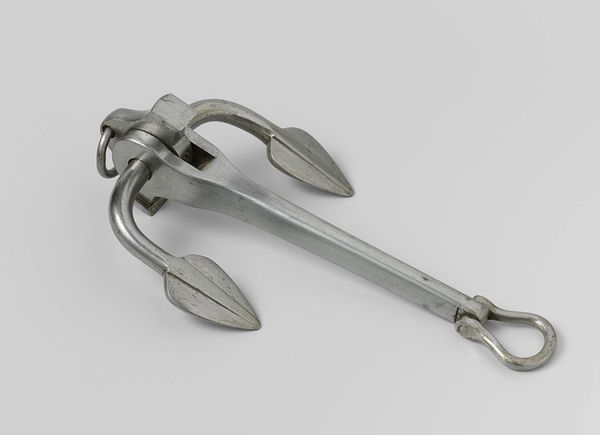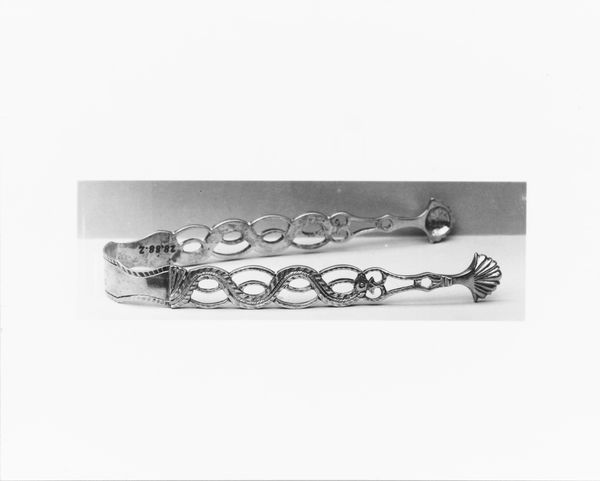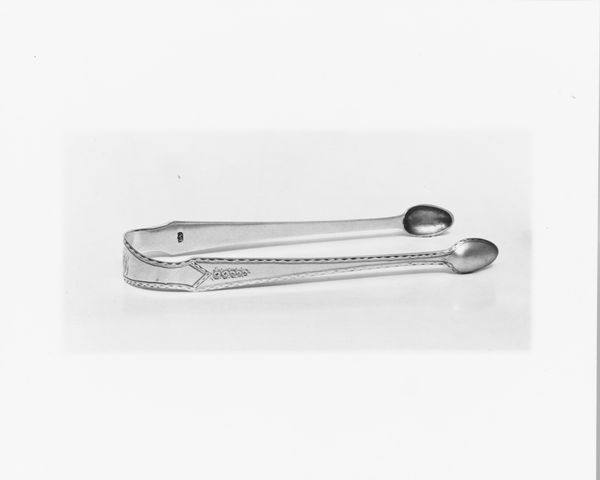
silver, metal
#
silver
#
metal
#
decorative-art
#
rococo
Dimensions: 10.5 × 4.1 × 1.2 cm (4 1/8 × 1 5/8 × 1/2 in.)
Copyright: Public Domain
These silver sugar tongs were made in London by John Tanner, sometime in the mid-18th century. They speak to the rise of sugar as a key commodity in British society. Sugar was not just a sweetener; it was a status symbol, embodying wealth, power, and global trade connections. The tongs are not merely functional, their ornate design reflects the cultural values of the time, where even everyday objects became canvases for expressing status and taste. The silver material indicates the luxury surrounding sugar consumption. The rise in sugar consumption was directly linked to the labor of enslaved people on plantations in the Americas. These tongs highlight the complex connections between commerce, colonialism, and consumption in 18th-century Britain. To truly understand these sugar tongs, we delve into historical records, account books, and studies of trade routes. Art history encourages us to consider objects like these as reflections of broader social, economic, and ethical issues, rather than just aesthetic design.
Comments
No comments
Be the first to comment and join the conversation on the ultimate creative platform.
